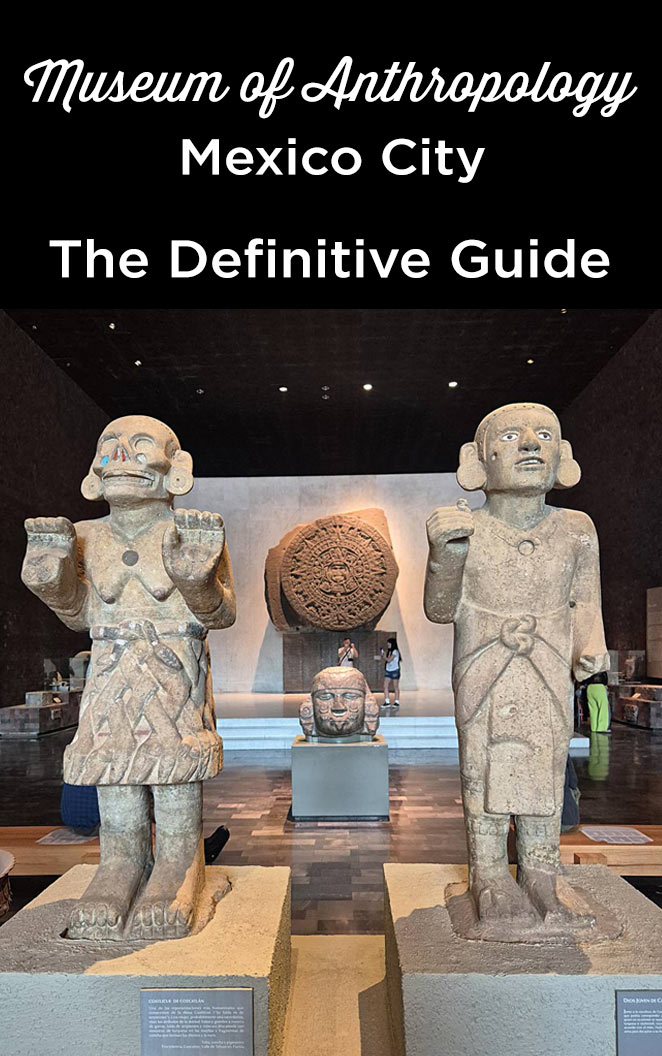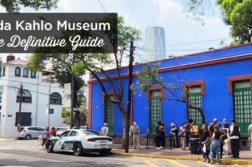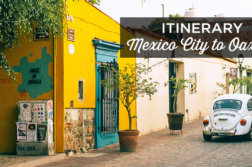National Museum of Anthropology (Mexico City): My Guide to the Must-See Exhibits
Planning to Visit the National Museum of Anthropology in Mexico City? Great idea!
This museum is a highlight of Mexico City and one of the most important museums in all of the Americas. A must for anyone curious about pre-Hispanic civilizations like the Aztecs, Mayas, Olmecs, and many more.
But be warned: the museum is huge! You could easily spend the whole day inside.
To help you plan your visit, I’ve gathered in this guide all the essential info: ticket tips, how to get there, and the best time to go.
You’ll also find my suggested itinerary for a first visit, the 10 most important pieces to see, tips to avoid the crowds, where to eat nearby, and how to include the museum in a perfect one-day itinerary with Chapultepec Castle and Polanco.
Ready to discover one of the best museums in Mexico City? Let’s go!
Sommaire
- National Museum of Anthropology (Mexico City): My Guide to the Must-See Exhibits
- 1. Essential Info for Your Visit (Tickets, Hours & Location)
- 2. Why Visit the Anthropology Museum?
- 3. How much time do you need at the Anthropology Museum in Mexico City?
- 4. My Recommended Itinerary: What to See Without Spending the Whole Day
- 5. How to Avoid Museum Fatigue
- 6. Top 10 Must-See Pieces at the Anthropology Museum
- 7. Tips for Visiting (What to Know Before You Go)
- 8. Where to Eat Nearby After Your Visit
- 9. Other Museums and Attractions in Chapultepec Park
- 10. Perfect One-Day Itinerary Around the Anthropology Museum
- 11. FAQ
- Staying in Mexico City
- How to find the best price for your flight ticket
- Rent a car in Mexico City
- You’re traveling in Mexico? These articles will help you!
1. Essential Info for Your Visit (Tickets, Hours & Location)
1.1 Entry Price (Updated)
The entrance ticket costs $100 MXN per person.
Children under 13, students and teachers with valid Mexican ID, seniors over 60, and people with disabilities get in for free. And if you’re a Mexican citizen or resident, admission is free on Sundays.
To skip the wait, or if you’d like a deeper experience with a professional guide, I recommend booking your ticket online in advance.
Just click on the one that best fits your visit:
| Ticket | Description | Price (may vary) |
|---|---|---|
| Skip-the-line ticket for the Museum | Skip-the-line ticket for the Anthropology Museum | 12$ usd |
| Anthropology Museum Guided Visit | Anthropology Museum Entrance and Guided Visit | 29$ usd |
| Anthropology Museum Private Tour | Anthropology Museum Private Guided Tour | 35$ usd |
| Anthropology Museum + Chapultepec Castle Tour | Chapultepec Castle and Anthropology Museum Entrances and Guided Tour | 37$ usd |
| Anthropology Museum + Chapultepec Castle Private Tour | Chapultepec Castle and Anthropology Museum Entrances and Private Guided Tour | 74$ usd |
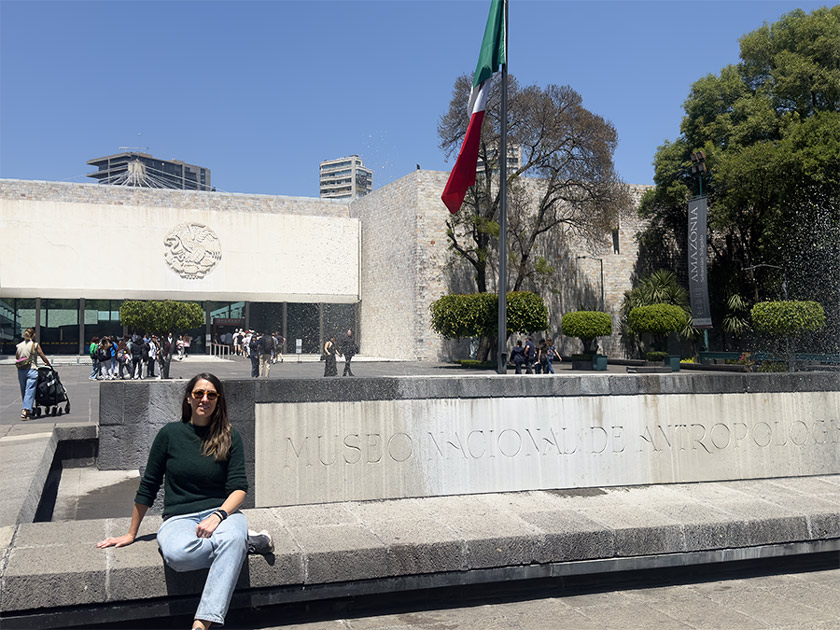
1.2 Opening Hours & Best Time to Go
The museum is open from Tuesday to Sunday, 9:00 AM to 6:00 PM. It is closed on Mondays.
I recommend arriving right at opening time to enjoy the museum without the crowds. From around 10:00 AM, it starts getting busy and lines at the entrance grow quickly.
If you’re buying your ticket on-site, a tip: you can pay by card at the machines located to the right as you enter. It’s faster than waiting in line for the cash desk.
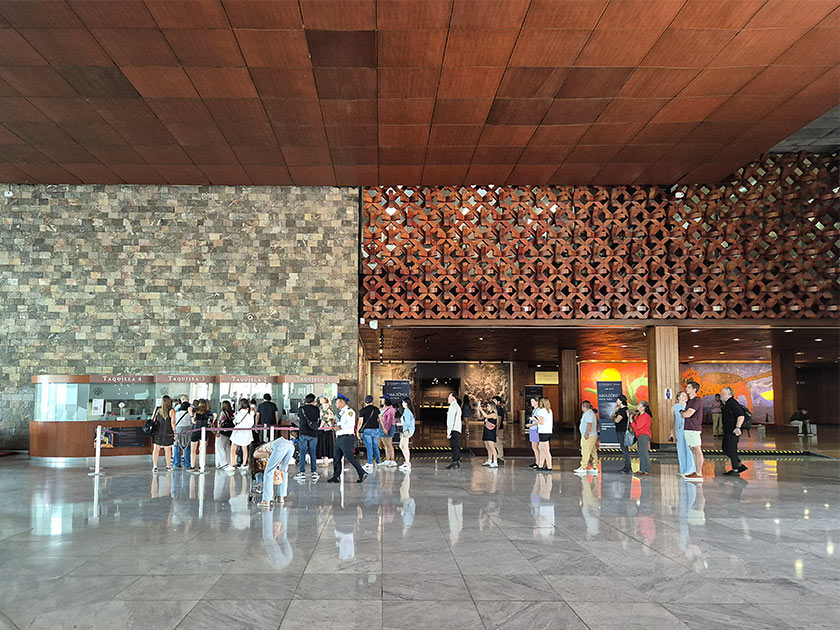
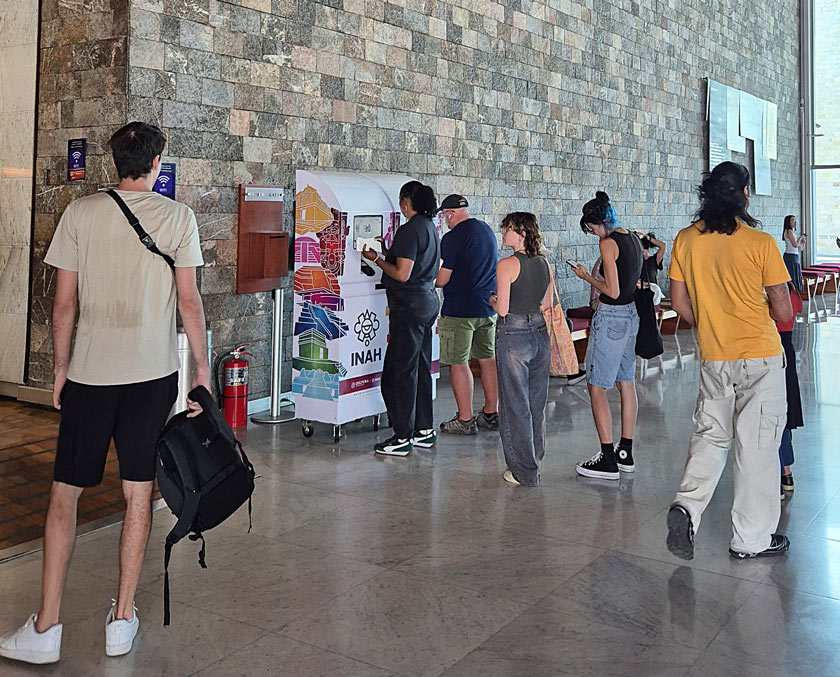
1.3 Location & How to Get There
The National Museum of Anthropology is located at Av. Paseo de la Reforma & Calzada Gandhi s/n, Chapultepec Polanco, in the heart of Mexico City.
- By Metro: Take Line 1 to Chapultepec or Line 7 to Auditorio. Both stations are about a 15-minute walk from the museum.
- By Metrobús: Line 7 stops right in front of the museum at the Antropología station.
- By Uber or Taxi: Just type “Museo Nacional de Antropología” into your destination.
- By Bike: The museum is accessible via the Ecobici bike-share system. There are bike racks available near the entrance.

2. Why Visit the Anthropology Museum?
This is my favorite museum in Mexico — it’s the place that made me fall in love with the country’s culture and history when I arrived in Mexico City for the first time.
What makes it so special is how it helps you connect the dots: if you’re planning to explore places like Chiapas, Yucatán, or Oaxaca, this is the perfect starting point to understand the deeper context of what you’ll see there.
Some of the most precious pieces of Mexico are housed here, including the Aztec Sun Stone, the colossal Olmec heads, and the iconic funeral mask of Pakal, the great ruler of Palenque.
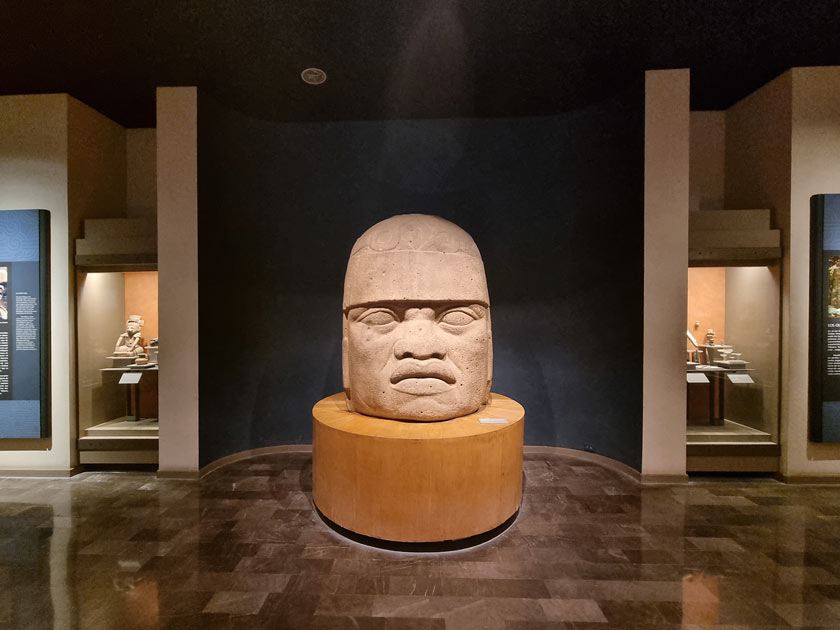
3. How much time do you need at the Anthropology Museum in Mexico City?
The museum is huge — you could easily spend the entire day exploring all its galleries and exhibits.
But if you’re short on time, it’s totally possible to see the most important highlights in 2 to 3 hours.
In the next section, I’ll share my suggested itinerary for a first-time visit, so you can experience the best of the museum without spending the whole day inside.
4. My Recommended Itinerary: What to See Without Spending the Whole Day
I love this museum—but after taking friends and family there at least five times, I’ve come up with a strategic itinerary that keeps everyone happy: you see the highlights without getting overwhelmed:
1. Teotihuacan Hall
I always start here—it’s my favorite.
The room is dedicated to one of the most important civilizations of Mesoamerica and gives you great context if you’re planning to visit the site.
You’ll see, for example, a reproduction of the Temple of Tepantitla, with its vivid mural of Tlaloc, the god of rain and fertility, the Palacio de Quetzalcóatl (or Temple of the Feathered Serpent), and the impressive 16.3-ton monolith of Chalchiuhtlicue, goddess of water, lakes, rivers, seas, and springs.


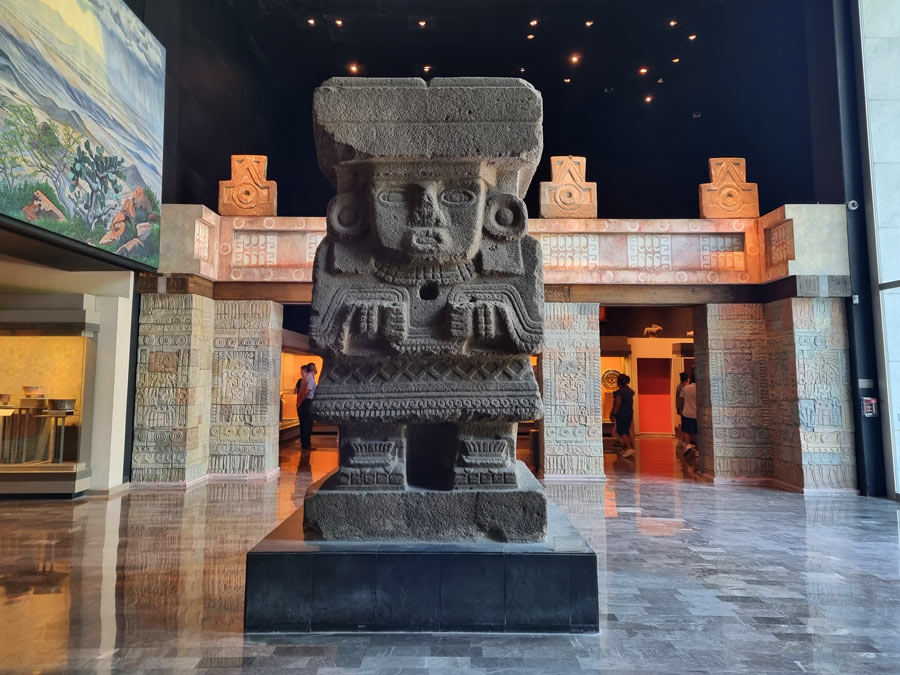
2. Mexica Hall
This is the most famous room—and for good reason.
The Mexicas founded Tenochtitlan, which is now Mexico City, and this room helps you project yourself into their fascinating world: their gods, their warriors, their ceremonies.
You’ll see some of the most precious pieces in the museum, including the Stone of Tizoc, the Coatlicue statue, and the famous Sun Stone (commonly called the Aztec calendar, though it was most likely used for ritual sacrifices).
I also really like the scale model of the heart of Tenochtitlan (where the cathedral and Templo Mayor museum now stand in Mexico City’s historic center)—it really helps you understand how massive and organized the city was!


3. Maya Hall
This hall gives a fascinating glimpse into the artistic and architectural sophistication of the Mayan world. You’ll see finely carved stelae, detailed ceramics, and one of the museum’s most iconic pieces: the jade funeral mask of King Pakal from Palenque.
In the garden, there are also temple reconstructions and inscriptions that help you better understand how the Mayans built, wrote, and ruled.
If you’re planning a trip to Chiapas, Yucatán or Campeche, this room gives excellent context before exploring the ruins in person!
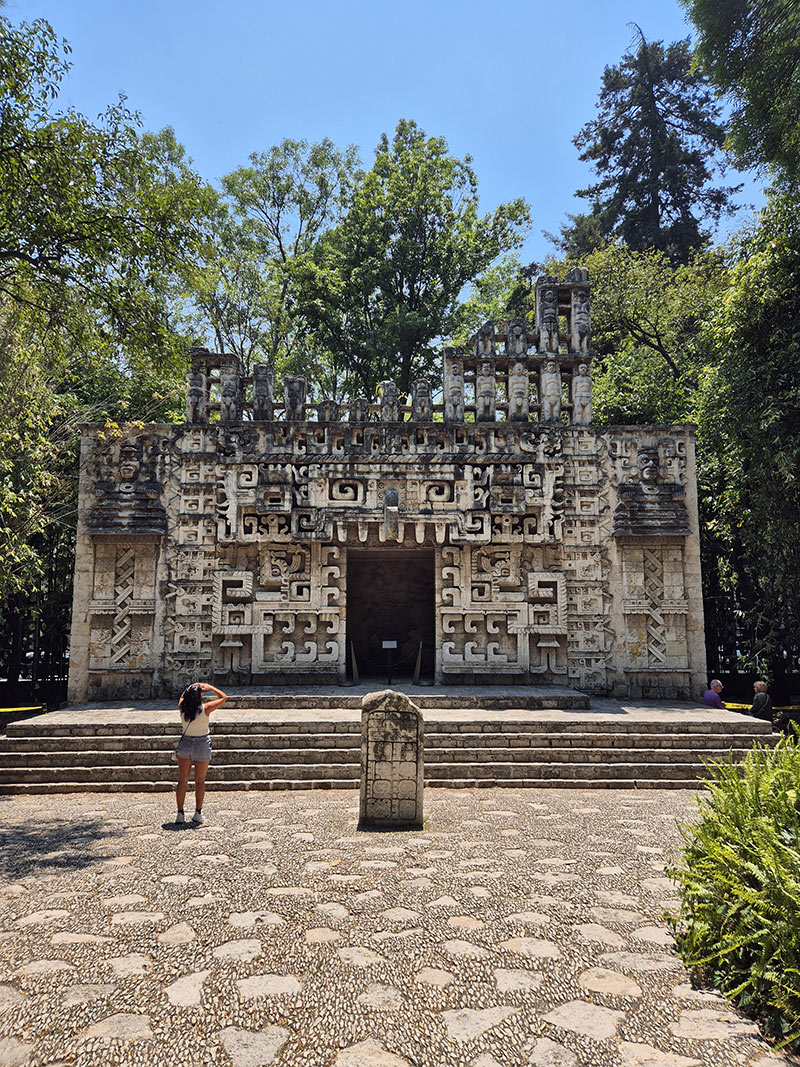
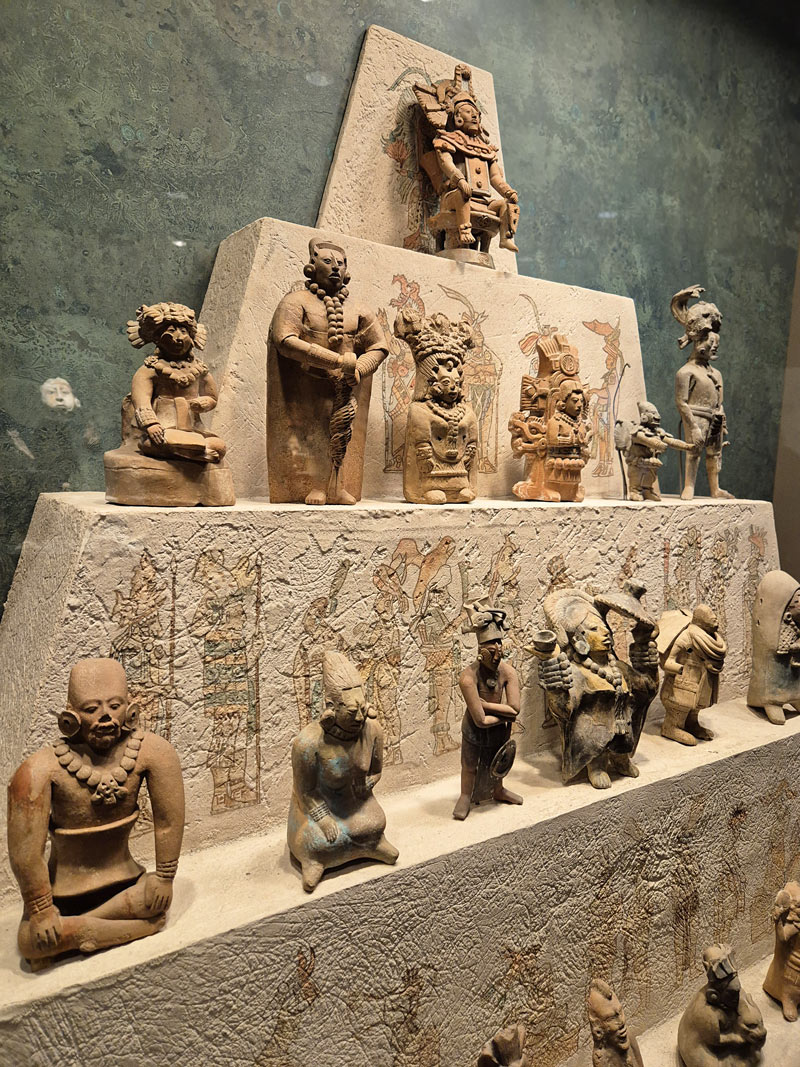

4. Oaxaca Hall (optional for a 1st visit)
If you still have time, don’t miss this room. Oaxaca was home to two major civilizations: the Zapotecs, who built Monte Albán, and the Mixtecs, known for their artistic finesse.
The room offers stunning funerary pieces and codices, giving you a glimpse into their deep and refined culture.
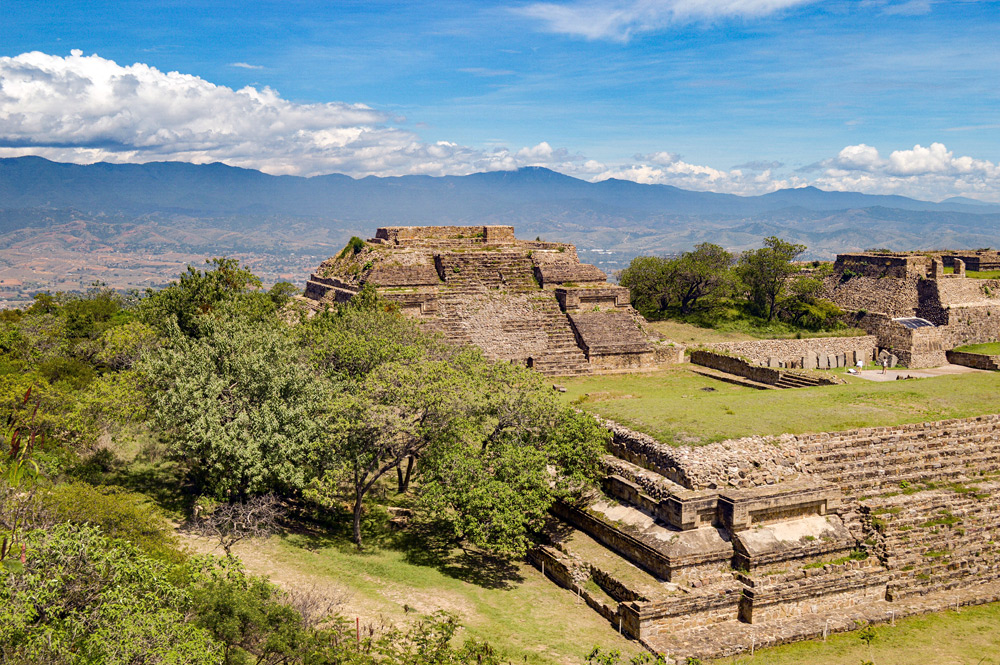
5. How to Avoid Museum Fatigue
This museum is huge, and after five visits, I’ve learned how to enjoy it without feeling overwhelmed. Here are my tips:
- Stick to a plan and avoid trying to see it all. Focus on just a few halls during your first visit.
- Take breaks. There are shaded benches in the inner courtyard where you can rest between sections.
- There’s a café and a restaurant on-site if you want to pause for a proper break before continuing.

6. Top 10 Must-See Pieces at the Anthropology Museum
There are over 7,700 archaeological pieces on display in the museum—obviously, it’s impossible to see them all in one visit. But here are 10 of the most famous and important pieces you should try not to miss.
1. Piedra del Sol (Sun Stone)
Probably the most iconic piece in the museum.
It’s commonly known as the “Aztec calendar,” but it was actually used for ritual purposes—most likely to track sacrificial ceremonies, not just dates.
It’s massive, detailed, and right in the center of the Mexica Hall. You can’t miss it!

2. Jade Mask of King Pakal
One of my favorite pieces. This funerary mask belonged to Pakal, ruler of Palenque, in present-day Chiapas. It’s carved out of jade and was found in his tomb, inside the Temple of the Inscriptions
Check out my complete guide to Palenque — packed with practical tips, essential info, and everything you need to plan your visit to this ancient city.
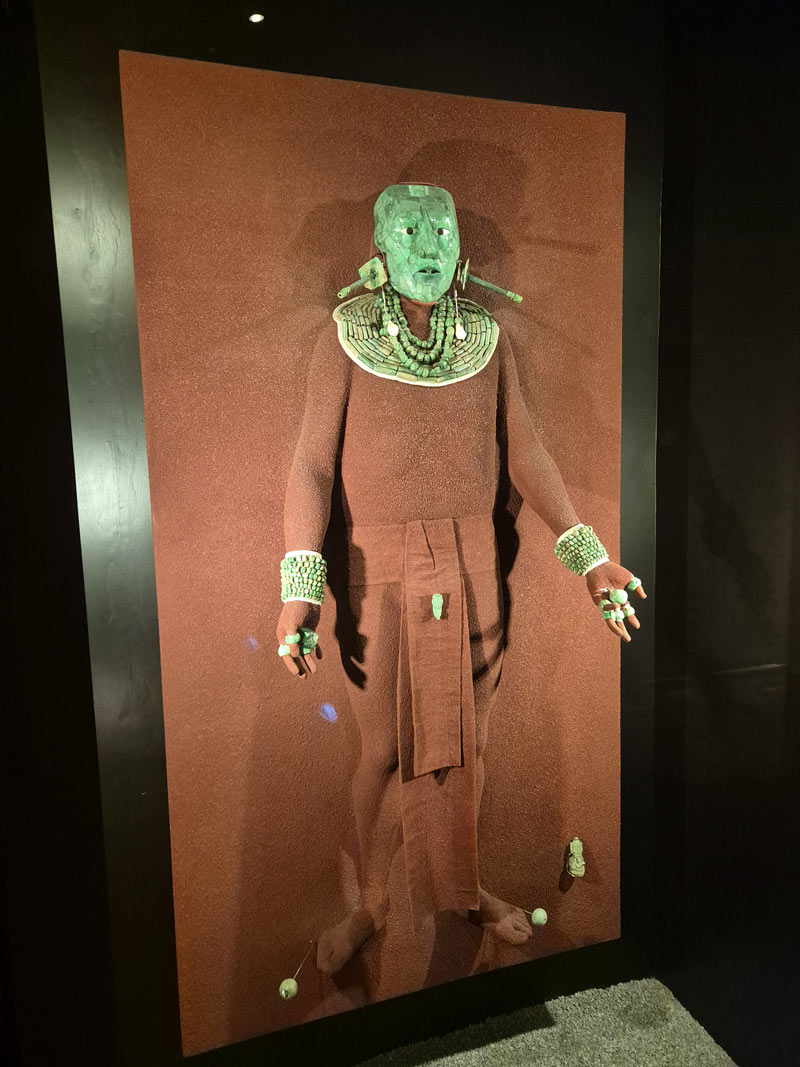
3. Atlante de Tula
These Toltec warrior statues are originally from the ruins of Tula in Hidalgo. They stand 4.6 meters tall, and the museum has one of them permanently on display. You really feel the power and precision of Toltec stonework.
4. Coatlicue
This statue is stunning and honestly a bit intimidating. It represents the mother of all Aztec gods—she has snakes, claws, a skirt of serpents, and a necklace made of hearts.
Every time I see it, I notice a new detail!
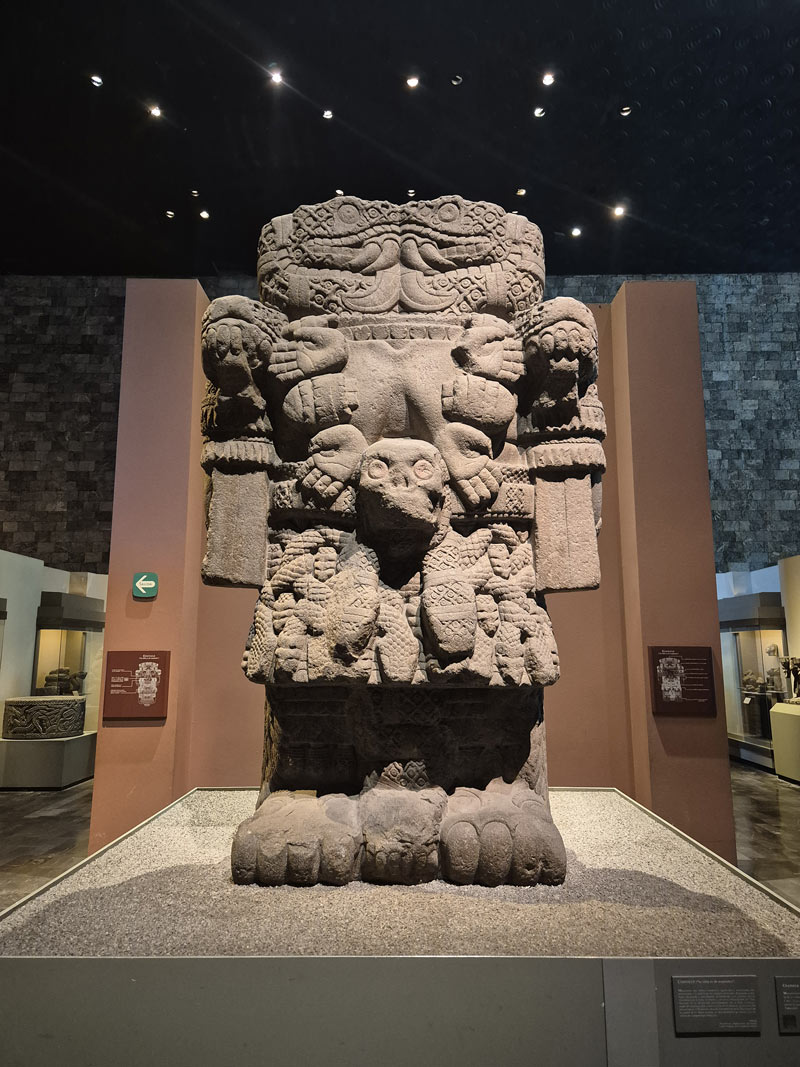
5. Teocalli de la Guerra Sagrada
This small temple-shaped stone shows the legendary eagle on a cactus—the image that became Mexico’s national emblem. It was buried under the Palacio Nacional for centuries.
6. Tláloc
Before you even enter the museum, you’re greeted by this giant 7-meter monolith of Tláloc, the god of rain.
It was transported all the way from Coatlinchan in the 1960s—and that day, a huge storm hit Mexico City. Funny coincidence or a sign from the rain god himself?

7. Toltec Skull Disk
This piece is known as the Disk of Mictlāntēcutli, the Aztec god of death and ruler of the underworld, Mictlān.
The carved skull at its center, surrounded by sun rays, symbolizes the link between death and the cosmic cycles of day and night—an important concept in Mesoamerican culture.
8. Obsidian Monkey
This small vessel, carved in the shape of a female monkey—possibly pregnant—was found in Teotihuacan and made entirely of obsidian, a volcanic glass highly valued in pre-Hispanic times.
Obsidian was prized not only for its sharpness—ideal for tools and weapons—but also for its glossy, reflective surface, which held ritual and symbolic significance.
9. Reproduction of the Temple of Tepantitla
In the Teotihuacan Hall—my favorite part of the museum, you’ll find a stunning mural of Tlaloc in vibrant colors. You’ll also see a reconstruction of the Palacio de Quetzalcóatl. These rooms really help bring the ancient city to life.
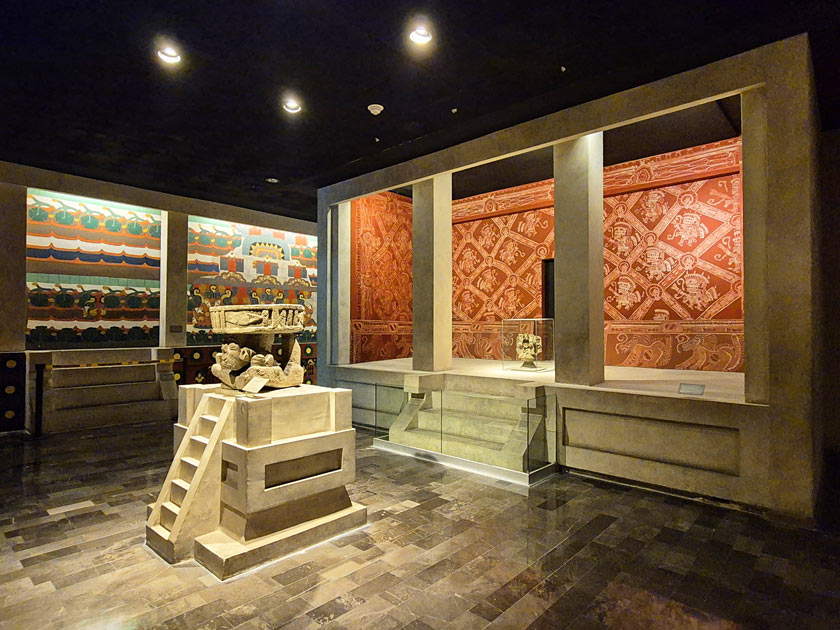
10. Mixtec Codices and Goldwork (Oaxaca Hall)
If you have time to visit the Oaxaca Hall, don’t miss the incredible Mixtec artifacts.
The codices tell whole stories through symbols, and the gold jewelry is simply beautiful. Oaxaca was home to both the Zapotec and Mixtec cultures, and this hall gives a great overview of both.
7. Tips for Visiting (What to Know Before You Go)
7.1 Souvenir Shop
The museum has a really nice souvenir shop — it’s big, full of beautiful crafts, and has great books and magazines about Mexican history and culture.
I always tell myself I won’t buy anything, but somehow I end up leaving with a little something every time. And I’m really not the type who usually shops for souvenirs!
7.2 When to Visit to Avoid the Crowds
The museum opens at 9:00 AM, and that’s the best time to go.
After 10:00, it fills up quickly — especially on weekends and holidays. If you can, avoid going on Sunday, since it’s free for Mexican nationals and residents and gets much more crowded.
7.3 Accessibility
I once visited with my aunt who has knee problems, and I was a bit worried — but everything went great.
The museum has elevators and accessible areas, so she was able to enjoy the whole visit without any issues.
That was a relief, because it’s really a place you don’t want to miss when you’re in Mexico City. ❤️

8. Where to Eat Nearby After Your Visit
After a few hours in the museum, you’ll definitely need a break — here are my go-to spots for grabbing a coffee, a snack, or a full meal nearby.
There’s a little café inside the museum called Sala del Café. It’s not my favorite spot, but it does the job if you just need a quick coffee, a cold bottle of water, or a pastry before heading back out to explore.
If you prefer something more comfortable, there’s also the Sala Gastronómica, the museum’s restaurant. It’s a calm, pleasant place to sit down and try traditional dishes from different regions of Mexico.
Now, if you’re up for a real meal and want more choices, here’s the thing: since the museum is right in the middle of Chapultepec Park, there aren’t many restaurants just next door.
Your best bet is to hop in an Uber, grab an Ecobici, or take your car to one of the nearby neighborhoods.
Polanco is the closest and has tons of great restaurants. It’s usually on the pricier side, but there are still affordable places too. One I really like is Non Solo — it’s simple, tasty, and doesn’t break the bank.
If you feel like going a bit further, you can also head toward Reforma, Juárez, or Roma. These neighborhoods are packed with options for every taste and budget — whether you’re in the mood for tacos, a fancy brunch, or a cozy café.
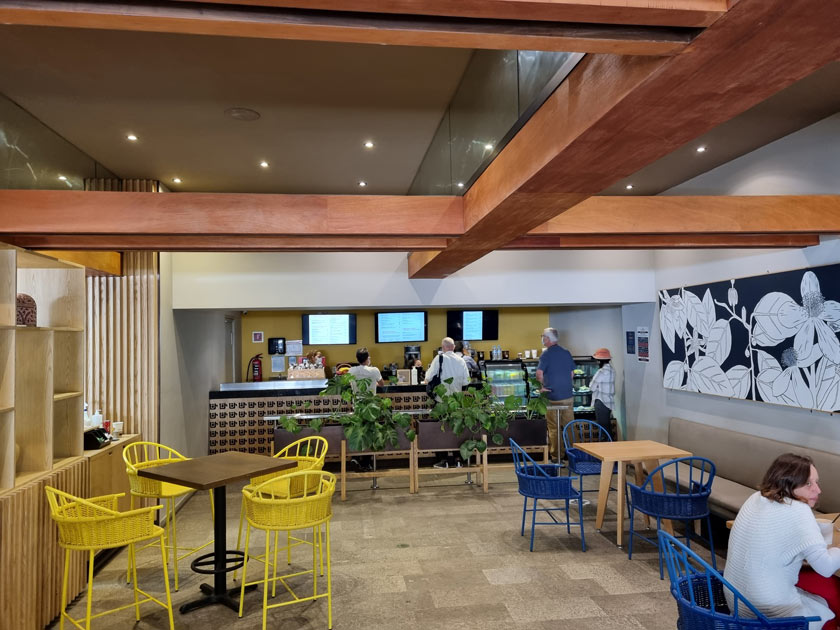

9. Other Museums and Attractions in Chapultepec Park
If you’re planning to spend the whole day around the museum, you’re in luck — Chapultepec Park is packed with things to see and do.
- Chapultepec Castle: The only royal castle in the Americas. It offers a mix of history and panoramic views of Mexico City. It’s about a 20-minute walk from the museum — mostly uphill!
- Tamayo Museum: Dedicated to contemporary art, it showcases works by Rufino Tamayo and other international artists. A small, stylish museum close to the Anthropology Museum.
- Modern Art Museum (Museo de Arte Moderno): Home to iconic Mexican artists like Frida Kahlo, Diego Rivera, and Remedios Varo.
- Chapultepec Zoo: One of the best zoos in Latin America — and free!
- Papalote Children’s Museum: A great option if you’re traveling with kids, with interactive exhibits focused on science and technology.
- National Auditorium (Auditorio Nacional): A major concert venue just outside the park — check the schedule if you’re into live music or events.
And of course, you can simply take a long walk in Chapultepec Park itself — it’s nearly twice the size of Central Park in New York and filled with shaded paths, street vendors, and quiet corners to relax.
You can also book your visit to Chapultepec Castle and the Museum of Anthropology, including guide and tickets, here:
I book the visit to Chapultepec Castle and the Museum of Anthropology!I buy my tickets with guided tour easily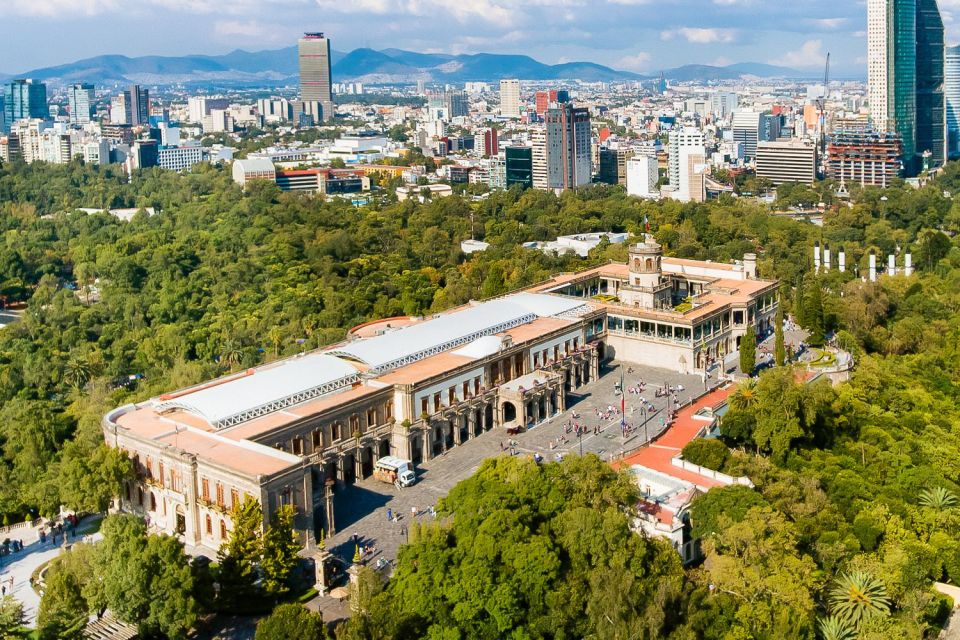
10. Perfect One-Day Itinerary Around the Anthropology Museum
If you’re planning to visit the Anthropology Museum and want to make the most of your day, here’s an itinerary I often follow when friends or family come to visit me in Mexico City.
Start your morning at the Anthropology Museum. Arrive early to beat the crowds and take the time to explore the highlights without rushing.
Then, walk over to Chapultepec Castle. It’s just a short stroll through the park and well worth a visit for the view alone—plus, it’s packed with history and beautiful interiors.
If you prefer to avoid any hassle, you can book this combined tour with a guide and your tickets already included.
After lunch, head over to Polanco, one of Mexico City’s most elegant neighborhoods.
Visit the Museo Soumaya, browse Antara Fashion Hall, or walk along Avenida Masaryk, often called the “Mexican Champs-Élysées.” Just note: Polanco can be a bit pricey, but you’ll also find some affordable options like Non Solo.
To wrap up your day, stop by Polanquito—a charming pocket of bars, restaurants, and leafy parks like Lincoln Park, perfect for a relaxed dinner or evening drink.
Don’t miss my Definitive Guide to Mexico City — it has the top 45 things to do, itineraries and my best tips to explore like a local.
You can also explore more of Mexico with my top itineraries and suggestions:
- 1 Day in Mexico City – How to spend just 24h in the Mexican capital
- 2 Days in Mexico City – The perfect itinerary for 48h!
- 3 Days in Mexico City – The best itinerary + where to stay
- 4 Days in Mexico City – Your four-day must-see guide
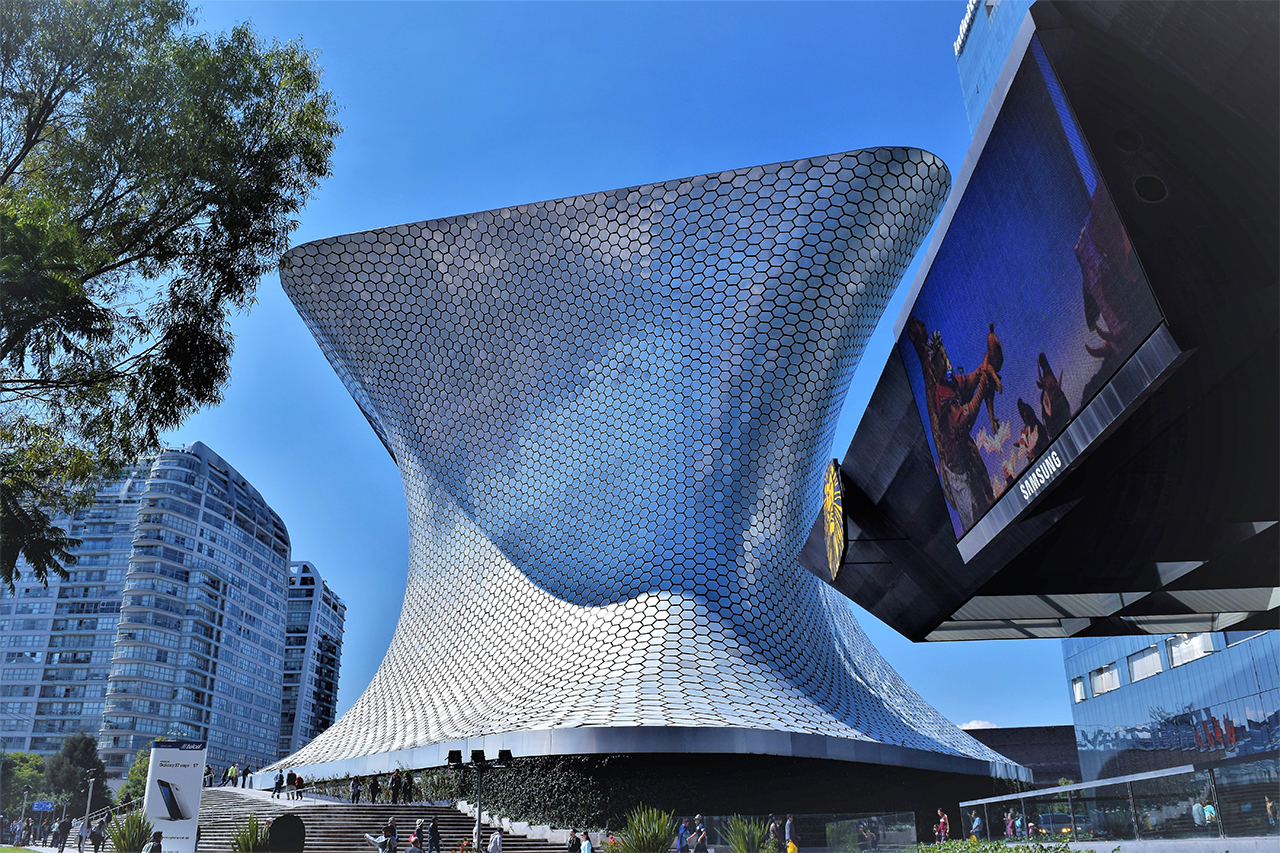
11. FAQ
11.1 Is it worth it if I don’t speak Spanish?
Absolutely! Many of the exhibit signs are translated into English, and the visual displays speak for themselves—huge stone monuments, intricate carvings, and reconstructions of temples and tombs.
If you want to go deeper and really understand what you’re seeing, I strongly recommend joining a guided tour in English. It completely transforms the visit!
11.2 Is the Anthropology Museum worth visiting with kids?
Yes! The National Museum of Anthropology is one of the best places to visit in Mexico City with kids. It’s full of massive stone sculptures, life-sized statues, and even reconstructed temples—so it feels more like an adventure than a typical museum visit.
There are lots of striking visuals that children find fascinating, like the Aztec Sun Stone or the colorful murals of the Temple of Tepantitla. Even if they don’t understand all the historical details, they’ll still be impressed.
It’s a great way to introduce them to Mexico’s ancient cultures in a fun and memorable way, without needing to speak Spanish or read every sign.

11.3 Is it suitable for a short visit?
Yes, the National Museum of Anthropology is absolutely worth visiting even if you don’t have a full day. With a good plan, you can enjoy a meaningful experience in just 1.5 to 2 hours.
You’ll leave with a solid introduction to Mexico’s ancient cultures, and that foundation will help you better understand what you’ll encounter later in your trip—whether it’s in Oaxaca, Chiapas, or Yucatán.
Staying in Mexico City
- Hostel Mundo Joven Catedral (historic center): one of the best hostels in Mexico City. Clean dorms and rooms, amazing rooftop terrace with bar, great atmosphere and an exceptional view over the cathedral and the Zocalo, starting at 15$usd for a dorm and 32 $usd for a private room!
- Hotel Villa Condesa (Condesa): if you are looking for a romantic hotel in Mexico City, this is a little oasis in the heart of La Condesa. It is an elegant house with small green terraces and tastefully decorated rooms. Rooms are spacious, breakfast is very good and the service is particularly attentive. Around 160$usd per night!
- Casa Goliana (Roma Norte): high-end hotel with the best value for money in its category, located in an early 20th century house, typical of the Roma area. Rooftop terrace, comfortable rooms, very attentive staff, and good breakfasts. Around 190$usd per night
- Four Seasons Hotel Mexico City (Juarez): this 5 star hotel is one of the best hotels in Mexico City, ideal for a business trip or a romantic stay. Located on Paseo de la Reforma between Colonia Juarez and Roma Norte. A large indoor garden, gym, swimming pool, spa, restaurant, and bar, Around 640$usd per night!
How to find the best price for your flight ticket
Mexico City Airport officially named Benito-Juárez International Airport receives a lot of national and international flights. It is the most important airport in Latin America!
To save money on flight tickets, you can use our flight comparator for Mexico, in partnership with Skyscanner: it’s the guarantee to pay the best price for your international and domestic flights!
Rent a car in Mexico City
Renting a car is for sure the best way to explore Mexico and make the most of your stay!
While it’s not super useful to visit the city, having a car is a must to discover the rest of the country.
To rent a car, personally, I always use Booking.com Cars, for a few reasons:
- You can easily compare the rental cars prices between all the agencies: for sure the easiest way to find the best rate!
- Cancellation is often offered free of charge: no need to worry if you change your mind
- Booking Cars offers full insurance coverage at a lower price than the rental companies, so it’s an instant saving with no effort
Simply click on the green button to find your rental car at the best price:
🚗 Rent a car
🗽 Book entrance tickets and guided visits
🏄 Book your sports activities
🌍 Take a travel insurance
🙎 Book a tour
✈️ Book your flight
You’re traveling in Mexico? These articles will help you!
Discover all my articles about Mexico: All my articles to help you plan your trip to Mexico are listed there.
The 35 Best Things to Do in Mexico
- 1 Day in Mexico City – How to spend just 24h in the Mexican capital
- 2 Days in Mexico City – The perfect itinerary for 48h!
- 3 Days in Mexico City – The Best Itinerary + Where to Stay
- 4 Days in Mexico City – Your Four-Day Must-See Guide
- Mexico City on a Budget: Guide + All my Best Tips to Save Money
- The Definitive Guide to 40 Best Free Things to Do in Mexico City
- World Cup 2026 Mexico: Guide, Tickets, Stadiums + Tips
- Teotihuacan (Mexico City): The Definitive Guide + Tips
- How to Visit Xochimilco (Mexico City): The Ultimate Guide
- Coyoacán (Mexico City): the 20 Best Things to Do in Frida Kahlo’s Neighborhood
- Frida Kahlo Museum (Casa Azul): Info, Tickets and Opening Hours
- Day of the Dead (Mexico): How to Celebrate Día de Muertos Like a Local
- 40+ Wifi Cafes in Mexico City that Every Digital Nomad Should Know About
- Muralism in Mexico City: The Essential Guide to the Best Murals
- Itinerary: 8-10 days in Mexico – From Mexico City to Oaxaca
- Itinerary: 10 days in Mexico – Mexico City, Chiapas and Yucatan
- Itinerary: 2 weeks in Mexico – Best itinerary to discover the Yucatan Peninsula and Chiapas!
- Itinerary: 3 weeks in Mexico – Mexico City, Puebla, Oaxaca, Chiapas, Campeche, Yucatán and Riviera Maya
- Itinerary: 1 month in Mexico – My Epic 30-31 Days Itinerary from Mexico City to Cancun
- Road trip in Mexico: The best itineraries for 10, 15, 21 days and a month
- Itinerary: 1 week in Yucatan – The Ultimate 6, 7 or 8 days Itinerary
- Itinerary: 10 days in Yucatan – Best Itinerary for 9, 10 or 11 Days in Yucatan
- Itinerary: 2 weeks in Yucatan – Epic Itinerary + All my Best Tips!
- Itinerary: 3 weeks in Yucatan – Best things to do in 20-21 days
- Itinerary: 1 month in Yucatan – Yucatan Peninsula in 29, 30 or 31 days from Cancun
- Road trip in Yucatan: The best itineraries for 7, 10, 15, 21 days and 1 month
You’re using Pinterest? Here is the picture to pin!
